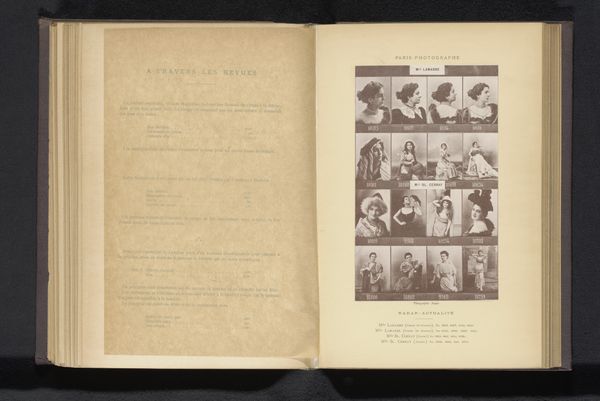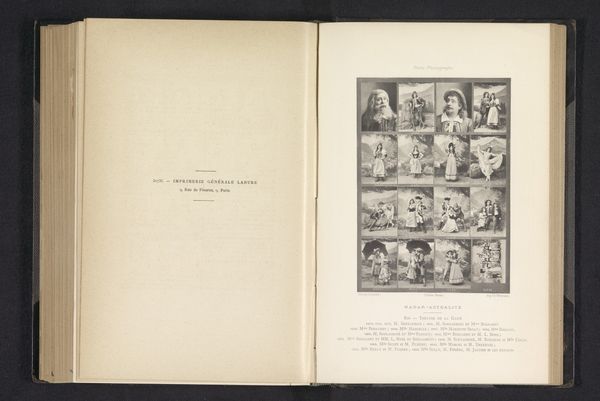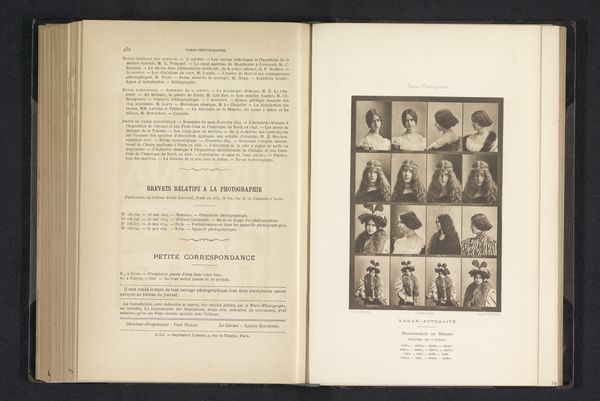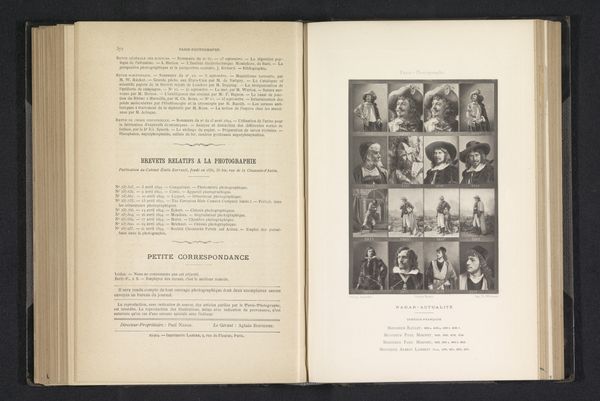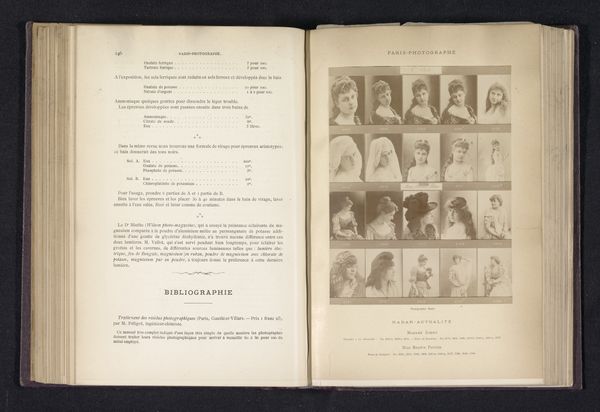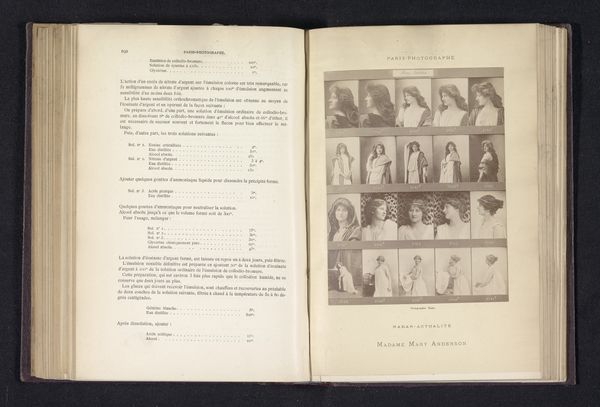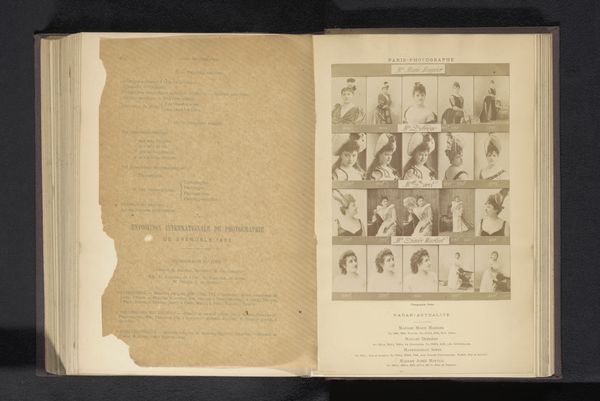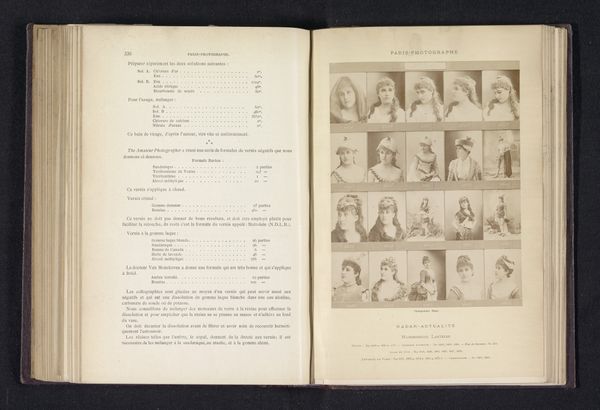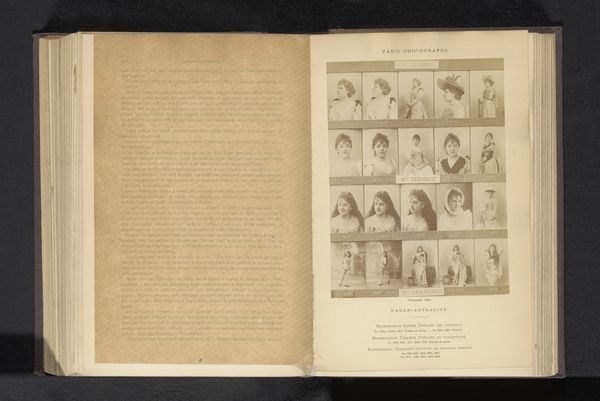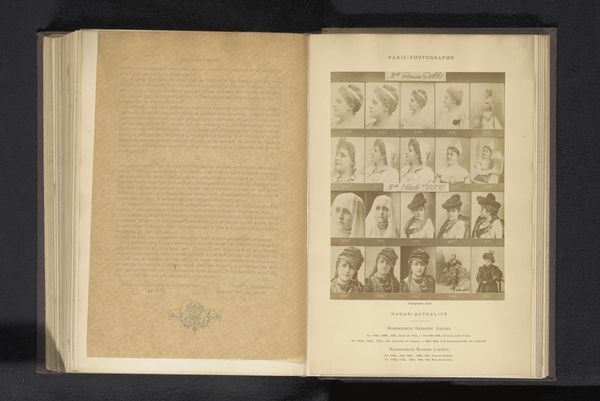
Dimensions: height 161 mm, width 114 mm
Copyright: Rijks Museum: Open Domain
Curator: Looking at this fascinating print from before 1893, titled "Zestien portretten van actrices" (Sixteen Portraits of Actresses) by Nadar, I find myself completely absorbed. What is your immediate impression? Editor: There’s a curious melancholy about it, wouldn't you say? Each face framed like a specimen, almost butterfly-pinned into history. It feels so orderly and contained, yet whispers of something quite riotous behind the expressions. Curator: Absolutely. Nadar, although best known for his portraits of prominent figures, creates a kind of visual directory here, highlighting women performers of the era. Considering that these portraits were crafted as albumen prints within an album, it offers a peek into the social currency of actresses at the time, their visual representation meticulously organized. Editor: Yes, it's striking how this work acts as a catalogue of female beauty in a society rapidly evolving through photography. Seeing them all lined up, I begin to wonder about their lives, their aspirations—especially considering the limitations placed upon women professionally during this period. Are we truly celebrating these artists or categorizing them? Curator: I think Nadar is doing both. On the one hand, the standardized format gives each woman a platform, democratizing their image, so to speak. Simultaneously, it underscores the cultural forces shaping their public persona and acknowledges their status as commodities within the burgeoning entertainment industry. Editor: The rigid composition really accentuates the careful construction of these personas. There’s such deliberation about dress, the particular glint in the eye caught at just the right angle. This print underscores how images were already being actively shaped and curated well before modern-day social media, right? Curator: Precisely! The presentation highlights not only the women themselves but also Nadar's own entrepreneurial drive as a portrait photographer marketing to a Parisian audience. It speaks volumes about the intertwining of art, celebrity, and commerce in 19th-century Europe. It's not just a portrait gallery; it's a mirror reflecting a very particular moment. Editor: It is interesting to consider their visual legacy and think about which images we still choose to cherish and which ones are more or less gone by the wayside now. Curator: Indeed! Nadar’s composition is not just sixteen portraits—it encapsulates broader discussions about how we document, memorialize, and ultimately, grant value to historical figures and events. It gives a lens to look into our visual perception, culture, and heritage of actresses in that era.
Comments
No comments
Be the first to comment and join the conversation on the ultimate creative platform.

